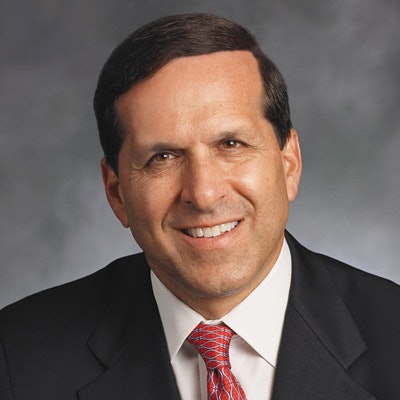
Dr. Roger P. Levin brings you the most thought-provoking topics from the Dental Business Study Clubs, an organization focused on the business of successful dentistry. Each month, Dr. Levin will explore an aspect of the business of dentistry in detail.
No one can predict the future. But sometimes businesses that can identify certain trends within their industry can determine the road ahead.
Dentistry is an industry undergoing rapid transformation in multiple areas. The trends that are outlined below are essential for all practice owners to understand so that they can implement a strategic plan to help combat any potential negative effects.
5 trends
 Roger P. Levin, DDS, is the executive founder of the Dental Business Study Clubs.
Roger P. Levin, DDS, is the executive founder of the Dental Business Study Clubs.Here are five trends that will determine where dentistry is going.
1. The growth of dental support organizations (DSOs)
In the last 10 years, we've seen an increasing number of practices that have 10 or more offices. Over the next 10 years, these small group practices will become acquisition targets for the larger DSOs, which are increasing their size as well.
Ultimately, we believe DSOs will comprise approximately 35% to 40% of the profession within the next five to 10 years. They will coexist with private practices but compete effectively through national or regional advertising campaigns, direct mail, and online marketing.
2. Declining insurance reimbursements
We have predicted for the last five years that all dental insurance reimbursements will eventually be dropping to a preferred provider organization (PPO) level. We are also now seeing the expansion of exclusive provider organizations (EPO), which are closed insurance plans that only certain doctors or practices are allowed to participate in.
The reimbursements for these plans appear to be even 15% lower than PPOs. To remain competitive, practices must prepare to handle a higher volume of patients to maintain the same production level, unless a practice decides to drop out of a specific plan. Tightening practice systems using leading-edge models, scripting, and team training can lead a practice to much higher levels of efficiency. This will allow practices to absorb higher patient volume without increasing stress levels.
3. Declining demand
“The demand for dental services is growing annually by less than 1%.”
The demand for dental services is growing annually by less than 1%, according to the Levin Group Data Center. There is also an emerging group of practices that are now in decline or relatively flat. To counteract this, practices should identify growth strategies, including adding services, increasing fee-for-service fees, streamlining systems, reactivating patients, and improving collection rates.
4. An increasing number of dental graduates
This is a great trend for dental schools as approximately 20 new schools have opened since 2004, and many schools overall have expanded their class sizes to take advantage of increasing revenue through tuition. However, for dentists, this is not good news. This increasing supply of new dentists, coupled with the fact that dentists are retiring approximately 10 years later than they used to, has resulted in increased competition and reduced fees.
5. Staffing challenges
Unemployment is currently at a very low level, and we are now seeing regions of the U.S. where it's very difficult to hire qualified dental employees. In my new book, Hire Right the First Time, Every Time -- How to Find, Get and Keep the Best Team Members for Your Practice, I point out that recruitment will be more challenging and require more innovative strategies than ever before.
It will be essential to understand the basics of leadership in human resources from a day-to-day standpoint to attract and maintain an excellent staff over the long-term. Always focus on the newest methods of recruiting and employee benefits. For example, most dental team members don't focus on or put as much emphasis on their retirement plan as they do on their day-to-day compensation. This is probably due to the level of compensation currently available, and we do not foresee any changes in this trend in the near future.
Reshaping the profession
These five trends are major factors that are reshaping the dental profession. Practices can compete extremely effectively, but they must embrace the changes that are taking place and take the necessary steps to continue to be successful in a changing industry.
Roger P. Levin, DDS, is the executive founder of the Dental Business Study Clubs.
The comments and observations expressed herein do not necessarily reflect the opinions of DrBicuspid.com, nor should they be construed as an endorsement or admonishment of any particular idea, vendor, or organization.


















